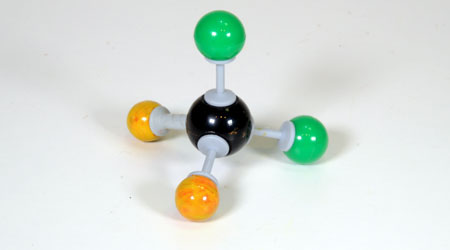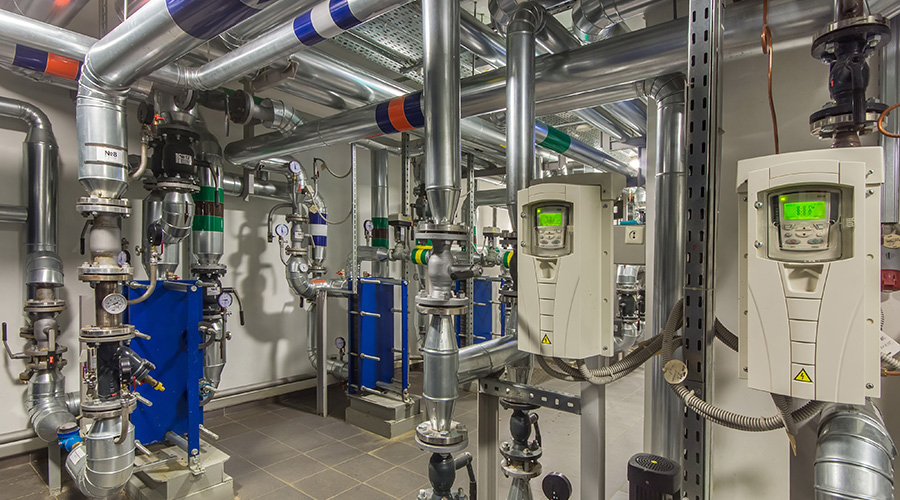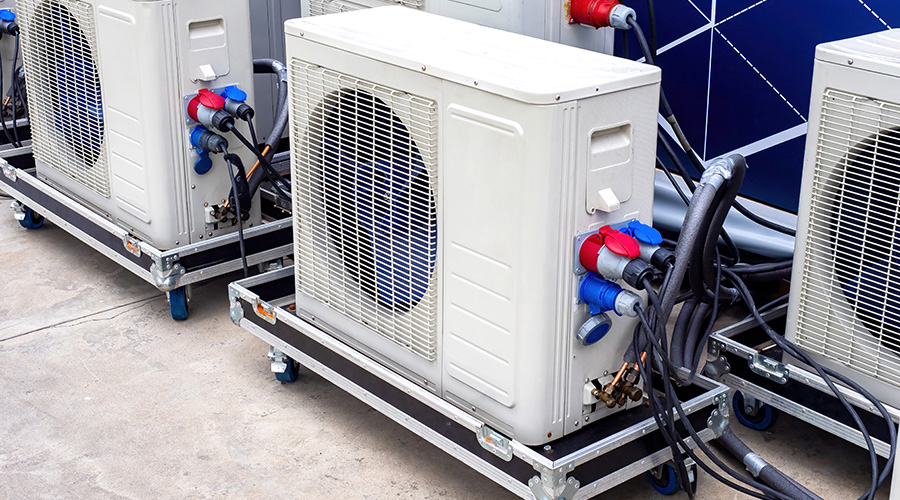Alternative Refrigerants: What Can Facility Managers Do?
Five strategies can help reduce the impact of refrigerants on the environment.
Savvy facility managers in leading organizations are finding ways to elevate this important HVAC challenge. Their path of responsibility begins by strongly weighing
the environmental and social impact of refrigerants in their facility decisions. Many are partnering with HVAC and refrigeration manufacturers committed to continuously improving their products.
Project Drawdown lists the following five measures to reduce the impact of refrigerants on the environment:
1. Lowering the demand/use of appliances and, through this influence, reducing production of refrigerants.
2. Replacing refrigerants with low-warming HFCs, new cooling agents, or non-HFC substances.
3. Increasing the refrigeration efficiency in appliances, lowering the use of refrigerants.
4. Controlling leakages of refrigerants from existing appliances by good management practices.
5. Ensuring recovery, reclaiming and recycling, and the destruction of refrigerants at end of life.
To focus efforts on direct FM and manufacturer impact, the following sections discuss specifically opportunities in downsizing and refrigerant management as well as in choosing alternative refrigerants.
Downsizing and Refrigerant Management
An effective method of refrigerant management is reducing demand for their use. By reducing the installed capacity of systems, refrigerant installed is also reduced. Methods of reducing system capacity include both passive and active energy reduction strategies, such as utilizing thermal storage for peak shaving, high-performance glazing, optimized envelopes, high-efficiency central plants, airside energy-recovery systems and natural ventilation. These strategies can effectively lower the cooling demand for a building, thereby downsizing the cooling equipment, and thus reducing the overall amount of refrigerant.
Natural ventilation is another design strategy that should be considered in appropriate climates to limit the need for mechanical cooling. In certain climates, operable windows strategically located to capitalize on prevailing winds, while coordinated with active building systems (e.g., large fans or boosted exhaust) as needed, can be a highly effective cooling strategy. Properly designed, natural ventilation can help reduce refrigerant demand and therefore reduce the building’s contribution to global warming throughout its operation.
For one Southern California project, where the climate permits natural ventilation and mixed-mode operation to be viable solutions, the building owner and design team chose to eliminate refrigerants and use natural ventilation only. To understand the climate impact of this decision, one can calculate the amount of carbon dioxide emissions avoided. The baseline for comparison of the two options was R-410A, a common HFC refrigerant utilized in commercial chillers in the US since the ban of HCFCs. R-410A has a global warming potential of 2,090, i.e., R-410A is 2,090 times more potent than carbon dioxide in its impact on climate change. For the 150,000-square-foot facility, assuming a refrigerant charge of 550 pounds and estimating a conservative 2 percent annual leakage rate, about 10 metric tonnes of carbon dioxide equivalent would be emitted in the first year
of operation. At the HVAC system’s assumed end-of-life at year 20 — and assuming a 10 percent end-of-life leakage — roughly 36 tons of carbon dioxide would be emitted. By using natural ventilation as a viable option in that climate area, over two decades, the owner could potentially avoid 200 ton of carbon dioxide equivalent emissions.
Selecting Natural and Alternative Refrigerants
Natural refrigerants and alternative refrigerant options are currently available in the industry. Natural refrigerants include ammonia, carbon dioxide, hydrocarbons, water, and air. The appeal of such natural refrigerants is both low GWP and low ODP, which has led to widespread adoption in the food refrigeration industry. However, each natural refrigerant poses unique challenges when utilized in HVAC applications, which has resulted in a slower adoption in the construction industry. For example, low-cost ammonia offers high energy performance and is easily detected by smell, but it is toxic in concentrations above a certain threshold, according to the Occupational Safety and Health Administration (OSHA). Carbon dioxide also has been used as a natural refrigerant, offering a GWP of one and ODP of zero, but carbon dioxide chillers are oftentimes more costly than other choices.
Alternative refrigerants are regularly used in foreign commercial applications, and some have been approved for use in the United States. Many of these alternatives are HFOs (hydrofluoroolefins), which have a significantly lower GWP than that for HFCs. For instance, the GWP for R-410A is 2,090, whereas the GWP for R-454B, (an R-410A alternative), is 466, which equates to a 75 percent reduction in global warming potential.
In another recent building project, the MEP engineer Buro Happold chose to specify chillers using an HFO refrigerant, R-514A, rather than a traditional HFC. To quantify the climate impact of this decision, one can calculate the carbon dioxide that would have been emitted had the MEP engineer specified a chiller utilizing a traditional HFC refrigerant, and compared this to that emitted by the selected HFO-compliant chiller. R-134A was used as the baseline HFC refrigerant for comparison. The HFO utilized has a GWP of 7, while the baseline HFC has a GWP of approximately 1,430. The chiller had a 3,000-lb. refrigerant charge and the study assumes similar leakage rates as in the natural ventilation case study. It was found that approximately 39 ton of carbon dioxide equivalent would be released with the HFC, while only 0.2 tonnes would be released with R-514A. In this case, at year 20 the building would avoid 750 tons of CO2e.
A few manufacturers are leading the industry’s transition away from HFCs. Because manufacturers have developed equipment compatible with HFO refrigerants, building owners and MEP engineers are able to utilize refrigerants with a low GWP without compromising facility operations, occupant comfort, or design intent. Overall, manufacturers are responding to the industry’s demand for climate-sensitive options and are increasing the number of products compatible with HFO refrigerants. One U.S. manufacturer has made their R-134A chillers to be compatible with R-513A, an HFO. Currently, many large commercial chillers are compatible with HFOs, although some types (e.g., physically smaller chillers, high-pressure chillers and variable refrigerant flow (VRF) systems) are further behind in the transition.
Refrigerant alternatives oftentimes have comparable efficiencies to the traditional refrigerant and require minimal modifications in equipment design. While any modifications may increase the price of manufacturing, the cost uplift is typically negligible compared to the cost to operate the equipment. There are instances, however, in which an alternative refrigerant will result in an efficiency loss or is incompatible with the desired equipment. Savvy facility managers and building owners will review these details with their consultant teams and various manufacturers to determine the optimal solution for the project.
Related Topics:














